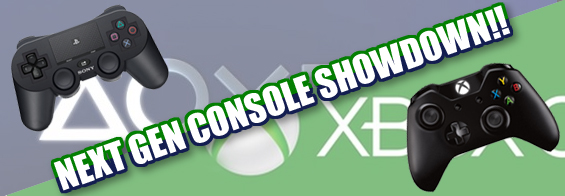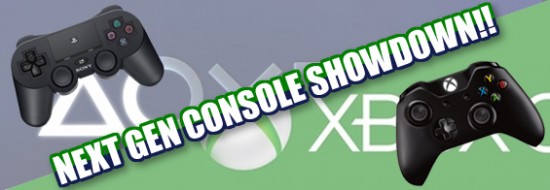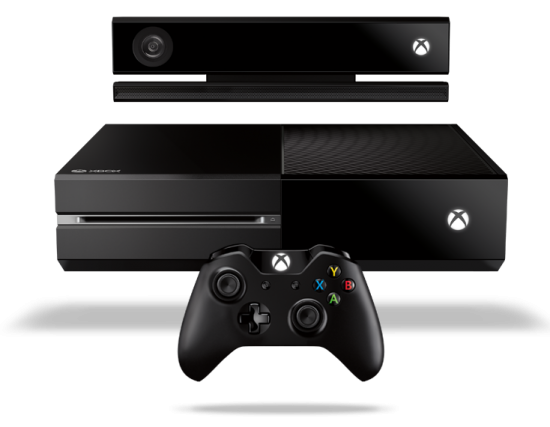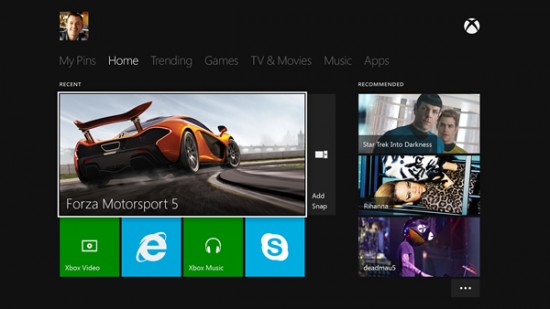This week Microsoft finally revealed its next generation Xbox in an event in Seattle. The new Xbox is called the Xbox One and offers a compelling blend of game-playing acumen and media capabilities. Now that both console’s capabilities have been mostly revealed, let’s compare the two consoles and see which looks the best.
Hardware
The PlayStation 4 and Xbox One are much more similar to one another than we saw with the PS3 and Xbox 360 last generation. This time around, both consoles use a similar AMD chipset, with an 8-core Jaguar CPU and an AMD GPU. The difference is that Sony has invested more in graphics, with a 1152 core GPU, while Microsoft opted for the same GPU with only 768 cores, resulting in 50% less raw horsepower.
Sony also takes the lead when we look at memory, with 8 GB of extremely high speed GDDR5 memory versus the cheaper and slower 8 GB of DDR3 used in the Xbox One. Microsoft has included 32 MB of embedded memory to make up for this shortcoming, but the simpler and stronger choice still seems to be the PS4.
One area that the Xbox One does lead is in heat and power usage, which should be lower overall thanks to its less powerful GPU and clever voltage and frequency throttling.
Neither console is backwards-compatible with the previous generation of games (due to the change in architecture from PowerPC to x86), but Sony has said it is looking into allowing that functionality through their streaming service, Gaikai.
Winner: PlayStation 4. Low-power and low heat for the Xbox One is nice, but that extra graphical grunt should make for more better looking and smoother running games on PS4. A little bit of backwards compatibility is nice too, even if it isn’t achieved in hardware.
Software
Microsoft has differentiated itself in the software side of the equation – while Sony seems to have gone for more of the same, Microsoft has made a big investment in TV and streaming video. Their Xbox One includes an extra HDMI in port, allowing the Xbox One to show cable or satellite TV. The Xbox One includes its own program guide and can control other devices via an IR remote. This functionality will only be available in the US initially, though.
The Xbox One also runs three operating systems simultaneously – the Xbox OS for playing games, a Windows 8 kernel for apps like TV, Skype and Netflix, and a third connector OS for switching between these. That setup reportedly provides a near instantaneous switching experience, allowing you to multi-task by switching between tasks or even running both on screen at once.
The upgraded Kinect also is a big part of the X1, allowing voice and gesture commands to be used. Whilst Sony also has Move, it seems much less of a focus.
Both operating systems seem to offer similar in-game options, including the ability to play games as they’re downloading, instantly switch to a low power mode without losing game progress and share clips of cool gameplay moments. Sony seems to have gone further with this last point, allowing for friends to take over from you mid-game and also live stream your gameplay sessions.
Winner: Xbox One. While people that only play games will likely find more features on the PlayStation 4, the Xbox One is a more general media machine that should offer a lot more utility in the living room.
Hot Button Issues
A lot of online commentary has focused around three hot-button issues: how used games are handled, whether the console must be online, and whether indie developers can publish their own games.
The used game front is probably the most confusing. Initial reports from Microsoft indicate that they’re still formulating a solution, but they seem to be favouring removing the utility of used games by tying games to a single user account and requiring a fee for the game to be transferred elsewhere. Sony has said that they’ll allow used games by default but publishers may be able to block them.
It’s a little more clear for the always-online issue. Microsoft seems to have the wrong end of the stick here, with a Microsoft executive announcing that the console has to phone home once a day, but won’t kick you out of a game for a momentary connection loss. Sony has said that it won’t require an always-on connection at all.
Finally, indie developers have complained that thus far Microsoft hasn’t made any mention of how they’ll be able to contribute their games to the platform, whilst Sony has been very involved with the indie community to ensure that those games can be self-published on the PS4.
Winner: PlayStation 4.
Conclusion
Both the Xbox One and PlayStation 4 look like solid upgrades over the previous generation, which was kicked off nearly eight years ago. While the PlayStation 4 looks like a better pure games machine and the Xbox One looks like more of a better media centre option, both consoles should handle both sides of the coin competently.
If the hot-button issues don’t bother you then just decide based on the games, which we’ll see at E3 in three weeks. I’m leaning towards getting both personally, though if I had to choose I’d go with the PlayStation 4 – I’m planning on picking up a Samsung HomeSync to augment my Galaxy S4, so media playback is less of an issue!
Which way are you going to go? Let us know in the comments below!



